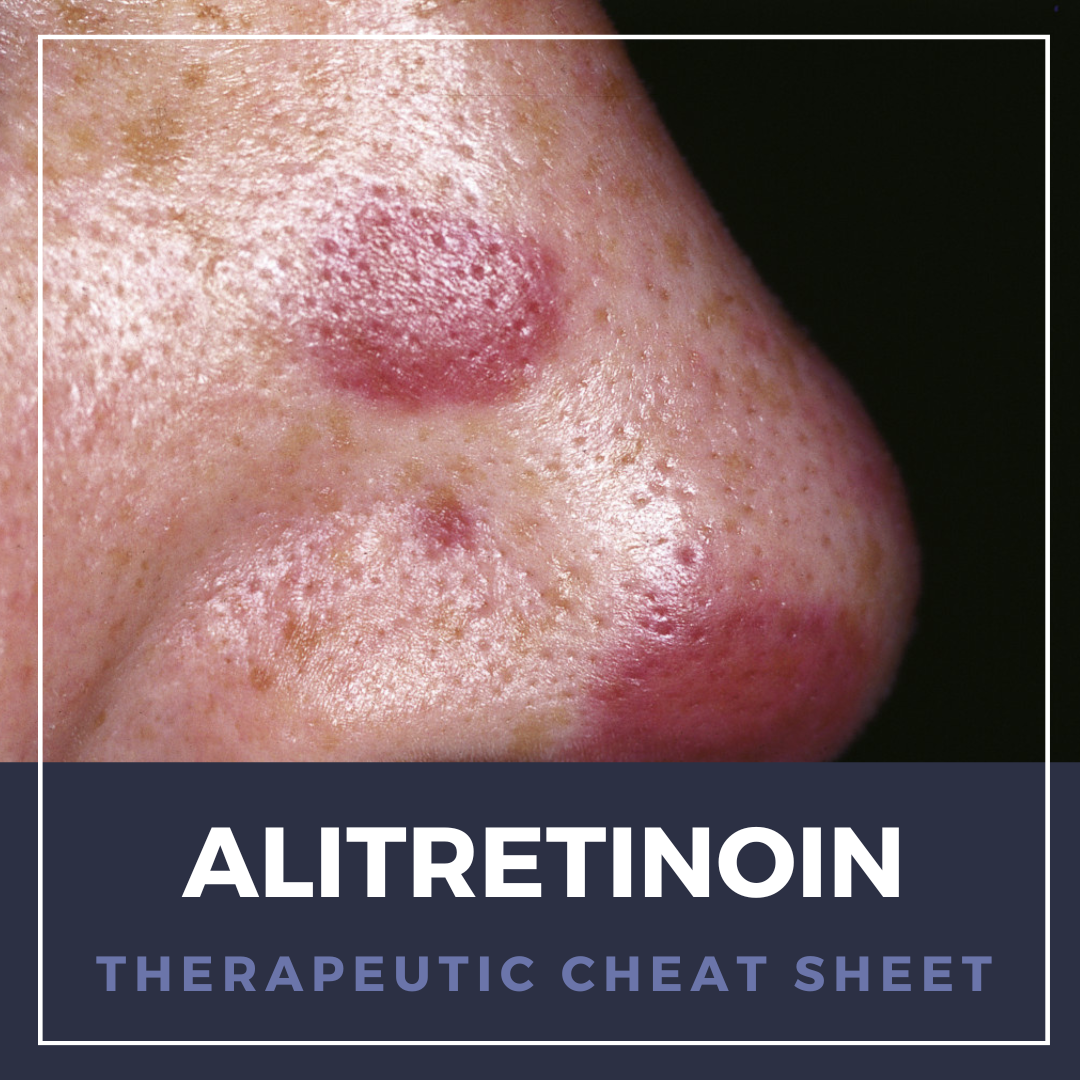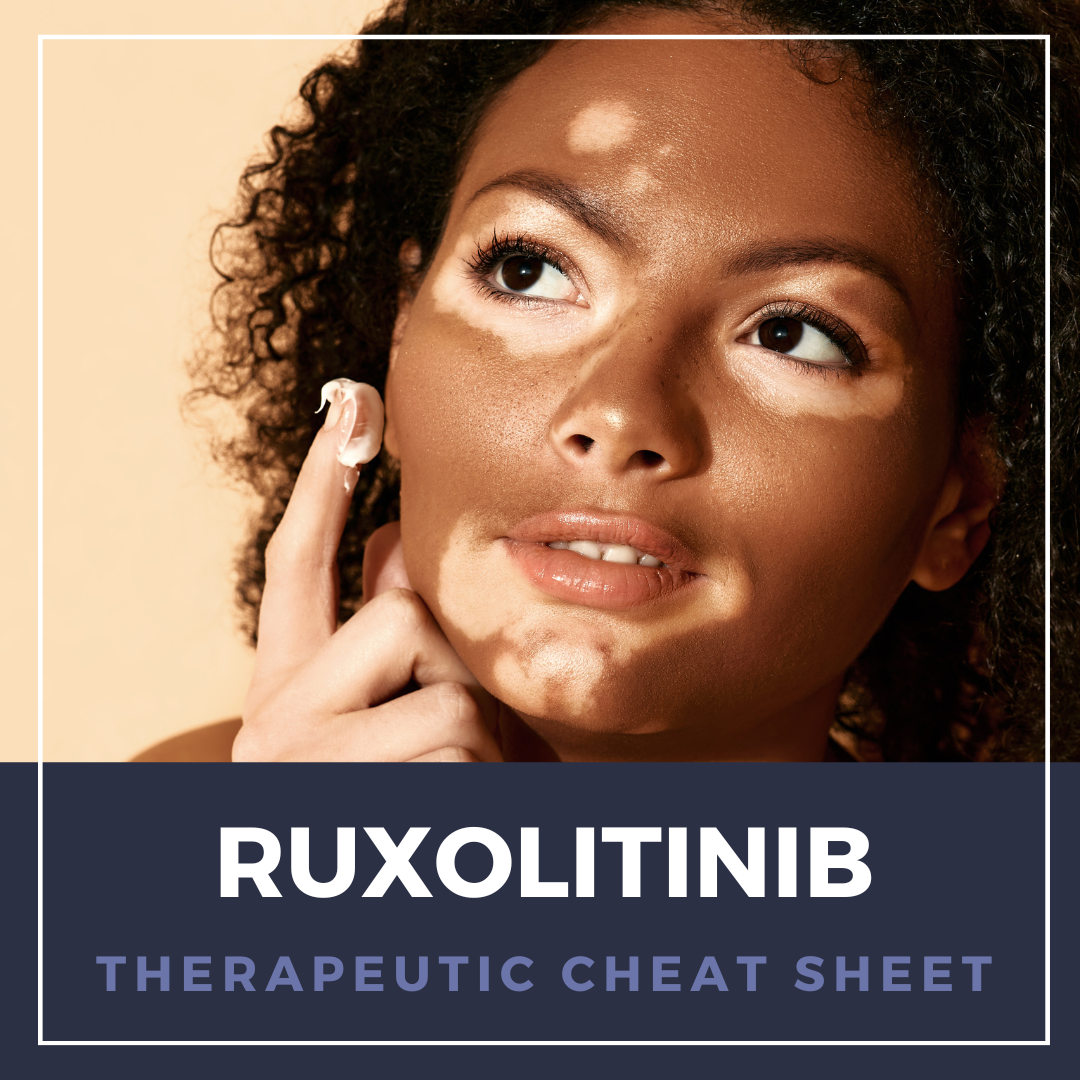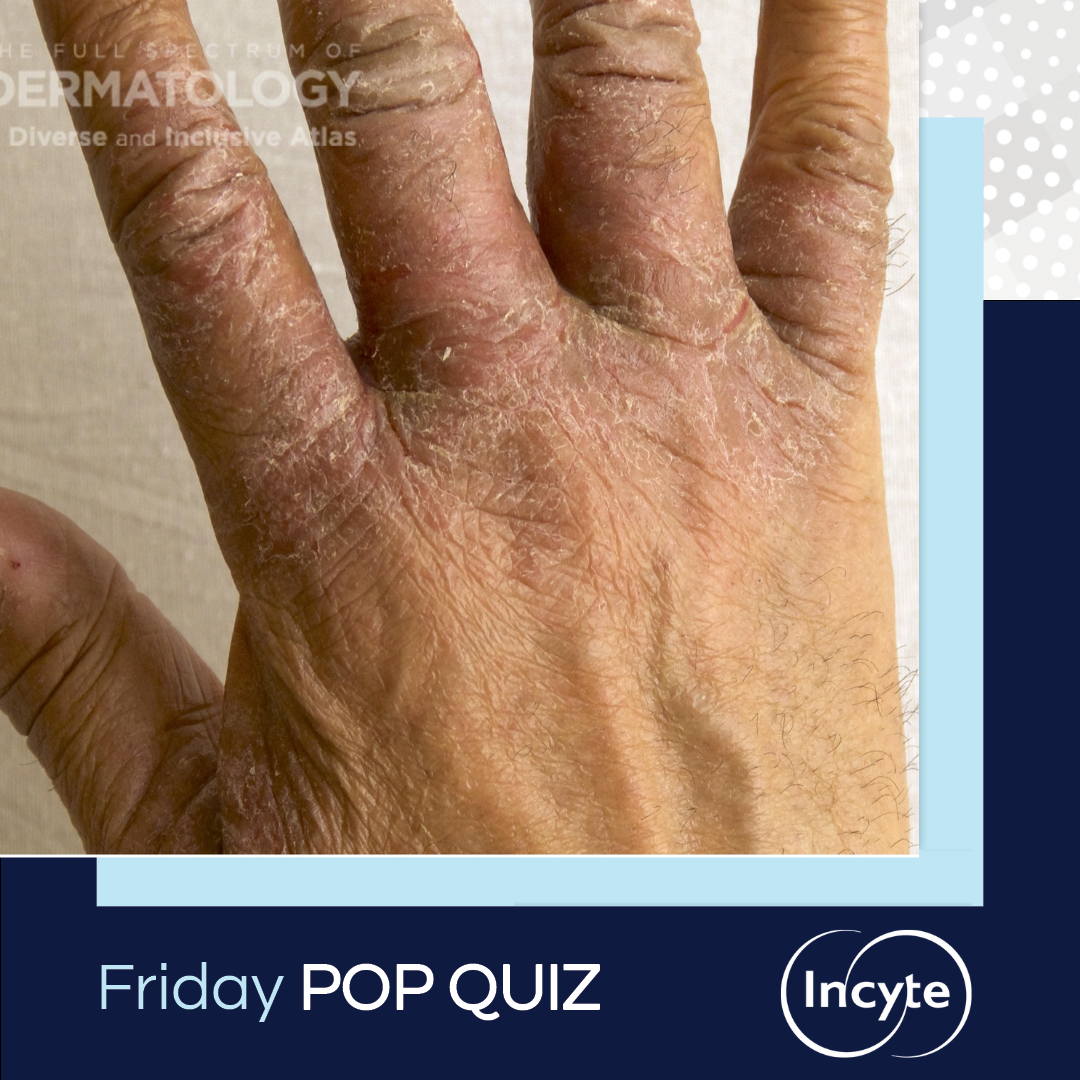Alitretinoin Therapeutic Cheat Sheet
204522045220452 Alitretinoin (9-cis-retinoic acid) is a naturally occurring endogenous retinoid that in gel form is FDA approved for AIDs-related localized cutaneous Kaposi’s sarcoma (KS)1. As compared to other topical retinoids, alitretinoin is unique in that it binds to all known intracellular retinoid receptors (RARs and RXRs), allowing it to exert anti-proliferative and apoptotic effects, particularly usefu …
Alitretinoin (9-cis-retinoic acid) is a naturally occurring endogenous retinoid that in gel form is FDA approved for AIDs-related localized cutaneous Kaposi’s sarcoma (KS)1. As compared to other topical retinoids, alitretinoin is unique in that it binds to all known intracellular retinoid receptors (RARs and RXRs), allowing it to exert anti-proliferative and apoptotic effects, particularly usefu …
 Alitretinoin (9-cis-retinoic acid) is a naturally occurring endogenous retinoid that in gel form is FDA approved for AIDs-related localized cutaneous Kaposi’s sarcoma (KS)1. As compared to other topical retinoids, alitretinoin is unique in that it binds to all known intracellular retinoid receptors (RARs and RXRs), allowing it to exert anti-proliferative and apoptotic effects, particularly usefu …
Alitretinoin (9-cis-retinoic acid) is a naturally occurring endogenous retinoid that in gel form is FDA approved for AIDs-related localized cutaneous Kaposi’s sarcoma (KS)1. As compared to other topical retinoids, alitretinoin is unique in that it binds to all known intracellular retinoid receptors (RARs and RXRs), allowing it to exert anti-proliferative and apoptotic effects, particularly usefu … 

 An increased level of which of the following proteins is most implicated in the pathogenesis of pruritus in the patient’s condition?
A. Defensin
B. Histamine
C. Interleukin-2
D. Interleukin-31
E. Transforming growth factor-beta
To find out the correct answer and read the explanation, click here.
Brought to you by …
An increased level of which of the following proteins is most implicated in the pathogenesis of pruritus in the patient’s condition?
A. Defensin
B. Histamine
C. Interleukin-2
D. Interleukin-31
E. Transforming growth factor-beta
To find out the correct answer and read the explanation, click here.
Brought to you by …  Increased expression of which of the following is most associated with the patient’s condition?
A. Interferon-gamma
B. Interleukin-2
C. Interleukin-13
D. Transforming growth factor-beta
E. Tumor necrosis factor-alpha
To find out the correct answer and read the explanation, click here.
Brought to you by our brand partner
…
Increased expression of which of the following is most associated with the patient’s condition?
A. Interferon-gamma
B. Interleukin-2
C. Interleukin-13
D. Transforming growth factor-beta
E. Tumor necrosis factor-alpha
To find out the correct answer and read the explanation, click here.
Brought to you by our brand partner
…  Ruxolitinib (OPZELURA) is a twice daily topical cream that is FDA approved for non-segmental vitiligo and mild to moderate atopic dermatitis1. JAK inhibitors are a class of drugs effective in treating a wide variety of inflammatory conditions. Initially only FDA approved for non-dermatologic conditions such as rheumatoid arthritis and ulcerative colitis, there is now strong evidence that JAK/STAT …
Ruxolitinib (OPZELURA) is a twice daily topical cream that is FDA approved for non-segmental vitiligo and mild to moderate atopic dermatitis1. JAK inhibitors are a class of drugs effective in treating a wide variety of inflammatory conditions. Initially only FDA approved for non-dermatologic conditions such as rheumatoid arthritis and ulcerative colitis, there is now strong evidence that JAK/STAT …  Infection by which of the following organisms is most likely to be present in the patient’s condition?
A. Cutibacterium acnes
B. Herpes simplex virus
C. Poxvirus
D. Staphylococcus aureus
E. Streptococcus agalactiae
F. Streptococcus pyogenes
To find out the correct answer and read the explanation, click here.
Brought to you by our brand partner
…
Infection by which of the following organisms is most likely to be present in the patient’s condition?
A. Cutibacterium acnes
B. Herpes simplex virus
C. Poxvirus
D. Staphylococcus aureus
E. Streptococcus agalactiae
F. Streptococcus pyogenes
To find out the correct answer and read the explanation, click here.
Brought to you by our brand partner
…